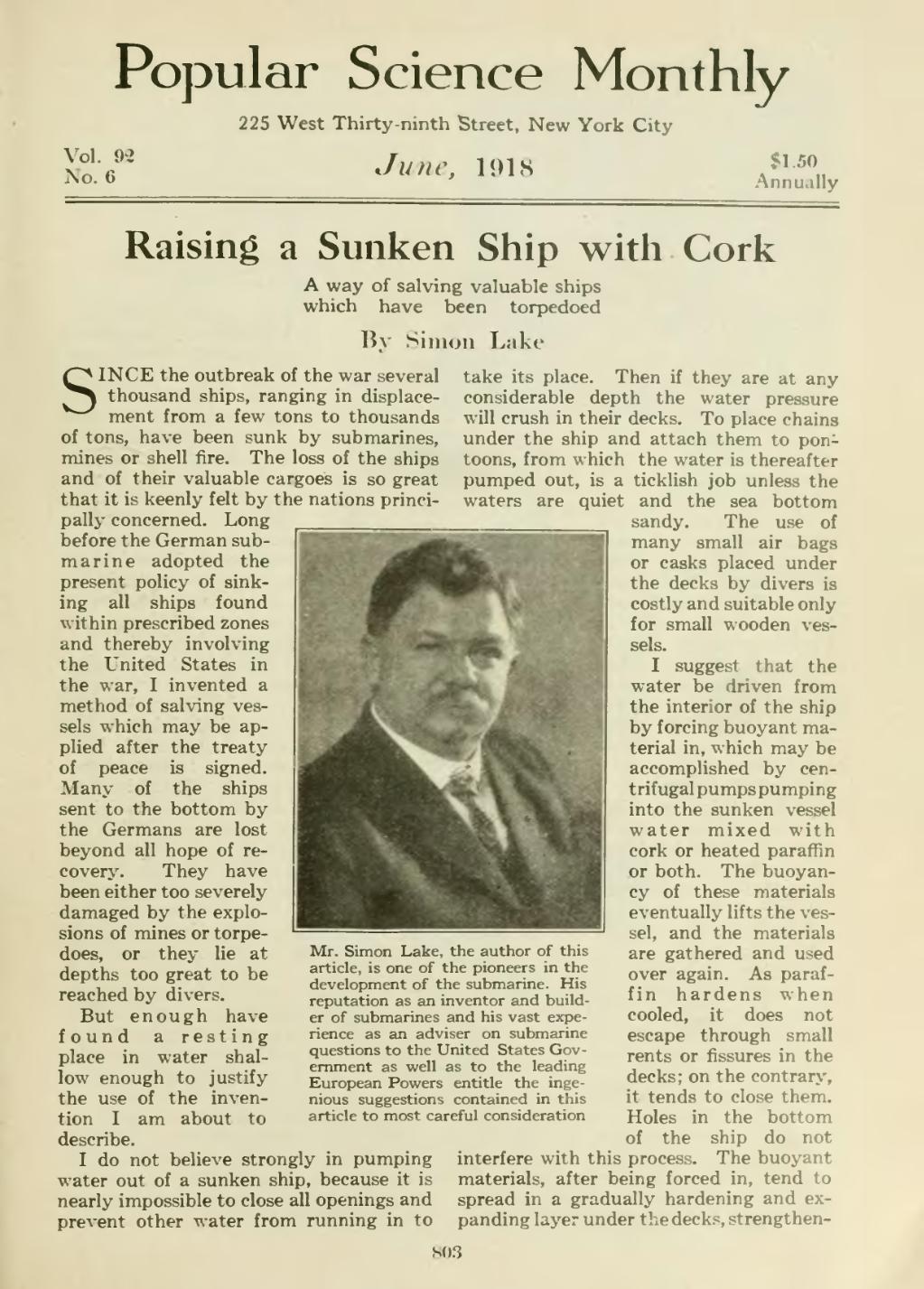| Popular Science Monthly | |||
| 225 West Thirty-ninth Street, New York City | |||
| Vol.92 | June, 1918 | $1.50 | |
| No.6 | Annually | ||
Raising a Sunken Ship with Cork
A way of salving valuable ships
which have been torpedoed
By Simon Lake
SINCE the outbreak of the war several thousand ships, ranging in displace- ment from a few tons to thousands of tons, have been sunk by submarines, mines or shell fire. The loss of the ships and of their valuable cargoes is so great that it is keenly felt by the nations princi- pally concerned. Long before the German sub- marine adopted the present policy of sink- ing all ships found within prescribed zones and thereby involving the United States in the war, I invented a method of salving ves- sels which may be ap- plied after the treaty of peace is signed. Many of the ships sent to the bottom by the Germans are lost beyond all hope of re- covery. They have been either too severely damaged by the explo- sions of mines or torpe- does, or they lie at depths too great to be reached by divers.
But enough have found a resting place in water shal- low enough to justify the use of the inven- tion I am about to describe.
I do not believe strongly in pumping water out of a sunken ship, because it is nearly impossible to close all openings and prevent other water from running in to
���Mr. Simon Lake, the author of this article, is one of the pioneers in the development of the submarine. His reputation as an inventor and build- er of submarines and his vast expe- rience as an adviser on submarine questions to the United States Gov- ernment as well as to the leading European Powers entitle the inge- nious suggestions contained in this article to most careful consideration
��take its place. Then if they are at any considerable depth the water pressure will crush in their decks. To place chains under the ship and attach them to pon- toons, from which the water is thereafter pumped out, is a ticklish job unless the waters are quiet and the sea bottom sandy. The use of many small air bags or casks placed under the decks by div-ers is costly and suitable only for small wooden ves- sels.
I suggest that the water be driven from the interior of the ship by forcing buoyant ma- terial in, which may be accomplished by cen- trifugal pumps pumping into the sunken vessel water mixed with cork or heated paraffin or both. The buoyan- cy of these materials eventually lifts the ves- sel, and the materials are gathered and used over again. As paraf- fin hardens when cooled, it does not escape through small rents or fissures in the decks; on the contrary, it tends to close them. Holes in the bottom of the ship do not interfere with this process. The buoyant materials, after being forced in, tend to spread in a gradually hardening and ex- panding layer under the decks, strengthen-803
